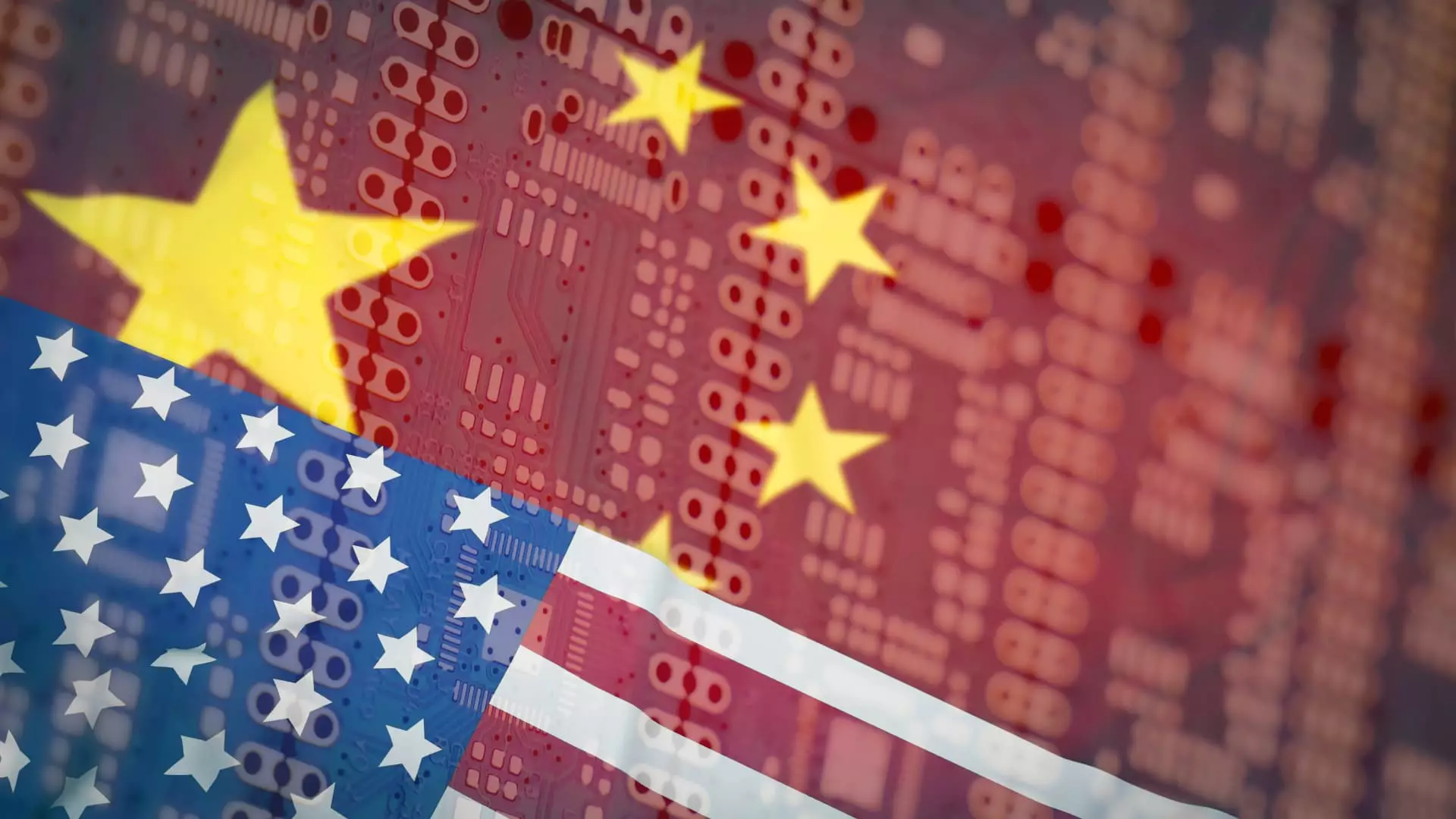As the geopolitical landscape grows increasingly contentious, China’s tech titans, Tencent and Baidu, are emerging as resilient players in the global artificial intelligence (AI) sector. This resilience is especially noteworthy given the U.S. government’s tightening grip on semiconductor exports, specifically targeting critical components produced by major firms like Nvidia and AMD. Far from succumbing to these pressures, Tencent and Baidu are demonstrating a proactive and adaptive strategy, navigating through regulation-laden waters with an air of confidence reminiscent of a well-trained chess player making calculated moves.
Martin Lau, Tencent’s president, highlighted the company’s stockpiling efforts, revealing an impressive inventory of high-end chips. Not merely a result of foresight, this strategy showcases an innovative approach towards resource utilization, proving that smaller, efficient models can sometimes eclipse the raw power of larger GPU clusters. Such revelations illuminate the idea that stagnation, whether borne from a lack of resources or regulatory hurdles, is a choice. Companies like Tencent are proving that adaptable thinking allows for significant gains in efficiency, simply by re-evaluating existing assets instead of clamoring for more.
2. Innovation Over Acquisition
The narrative surrounding chip scarcity often leads to a defeatist mindset, but Tencent and Baidu are flipping the script. Lau articulated a profound reality when he stated that software optimization can alleviate dependency on expansive GPU collections. This pivots the discussion from a fixation on hardware acquisition to an emphasis on innovative software solutions, echoing a vital truth in the tech community: a well-optimized algorithm can outperform a poorly utilized machine any day.
Baidu reiterates this philosophy, with executive Dou Shen emphasizing their comprehensive “full-stack” approach which integrates cloud infrastructure, AI models, and applications like the ERNIE chatbot. In an environment where external pressures could cripple many companies, Baidu’s strategy underscores the importance of building an autonomous, self-sufficient ecosystem. Highlighting this capability, companies avoid the pitfalls of over-reliance on foreign technology, setting a model for how to thrive under restrictive conditions.
3. The Quest for Semiconductor Independence
While both Tencent and Baidu navigate U.S. restrictions, the broader narrative reveals a clear ambition within China to establish a self-sustaining semiconductor supply chain. Analysts like Gaurav Gupta suggest that this endeavor is not only ambitious but is beginning to yield tangible results. The evolution from reliance on imported chips to fostering an indigenous semiconductor culture indicates a significant shift. This transition exemplifies a larger paradigm within China’s tech landscape, where companies are determined to break free from external vulnerabilities.
The progress made in semiconductor technology may still lag behind the U.S., yet the momentum is undeniable. A nation that steadfastly pursues technological self-sufficiency signals to the world its unwillingness to simply play defense in an arena where it once strived to be an equal player. By supporting home-grown talent and technology, China is laying bricks for a future where it can compete on equal footing, potentially even steering the global AI conversation.
4. Embracing a Competitive Edge in Real-Time Adaptation
The current environment necessitates that companies don’t merely react but also anticipate the trajectory of global trade relations. As U.S. executives urge Washington to reconsider its export restrictions, one can’t help but wonder if such regulatory moves might ultimately backfire. Nvidia CEO Jensen Huang’s recent claim that these curbs could be detrimental to American businesses rather than their Chinese counterparts is indicative of a larger narrative—one where restrictive practices may unwittingly bolster competition abroad.
The advantage lies not merely in stockpiles of chips or the sophistication of technology; instead, it exists in the cognitive agility displayed by firms that view these challenges not as roadblocks but as triggers for innovation. The Chinese response to U.S. export restrictions emphasizes a shift in economic warfare—one in which the battlefield is as much about technological innovation as it is about political tension.
5. A New World Order in Tech?
The unfolding rivalry between China and the United States in the realms of semiconductors and AI is emblematic of a significant shift in global power dynamics. China’s tech giants are not merely reacting to U.S. restrictions; they are redefining the rules of engagement entirely. Their ability to rapidly adapt, innovate, and optimize will pave the way for a future where geopolitical tensions may even catalyze unprecedented technological advancements.
China’s unwavering commitment to its AI ambitions reflects an understanding that the stakes are high. The developing landscape signifies a new world order in tech, where innovation, resourcefulness, and a relentless pursuit of self-sufficiency could establish a formidable challenge to U.S. tech supremacy. In this race, it is adaptability, not mere size, that will dictate the leaders of tomorrow.

